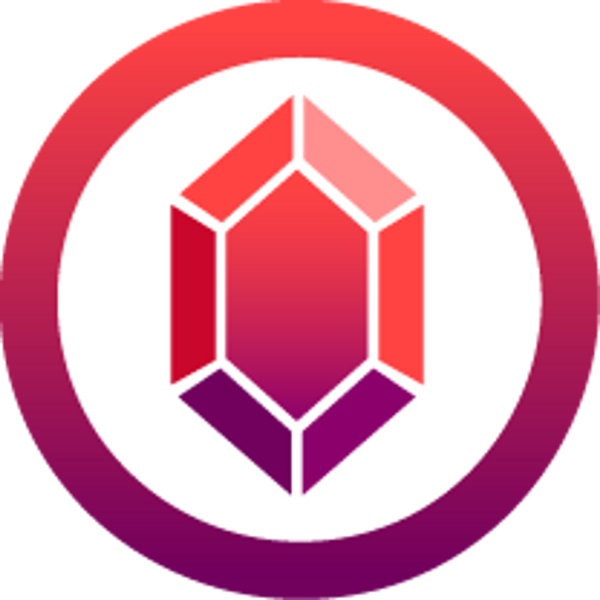DeFi is built on the idea of financial services that are accessible to everyone. For the sector to become more than a playground for tech-savvy traders wealthy enough to afford the gas fees, we need to ensure that every element of a DeFi system, from infrastructure to token distribution, is as open and decentralized as possible.
Ruby.Exchange is designed to ensure unnecessary barriers to entry are eliminated across every domain, making sure the value generated and distributed by the platform flows into the hands of as diverse a user base as possible. This, in turn, will help underpin a robust DAO and vibrant DeFi ecosystem on SKALE.
The Challenge For Ruby Exchange And DeFi
DeFi is a logical progression of cryptocurrency technology, itself the heir of the Cypherpunk movement which, in the early days of the internet, advocated for privacy, strong cryptography, and open systems as tools of social and political justice. Once effective open digital money is established, open financial services are the obvious next step.
The adoption curve for DeFi is the most convincing argument of the demand for these services, with the value locked in DeFi protocols rising over 2,500% in 2020 and more than quadrupling again in 2021 so far, to well over $100 billion. That interest comes from a broad cross-section of global society, from forward-thinking hedge funds and family offices to individuals in failing states who lack access to banking.

Today, as DeFi approaches a watershed moment of crossover appeal to the mainstream, with the potential influx of hundreds of millions of new users, it's more important than ever that it remains open and inclusive. This isn't just a question of ideology. It's a pragmatic requirement that enables DeFi platforms to compete with TradFi and build market share.
With that requirement comes a series of challenges. For any organization serious about open finance, it's not enough simply to launch a new DeFi protocol. "Open source" platforms that exclude billions of global users have fallen short of their potential. That, unfortunately, has been the effect of poor user experience, high gas fees, exploits resulting from unaudited code, and even low-quality marketing.
Ruby addresses all of these problem areas. This is critical, because the protocol will distribute millions of tokens in the form of LP rewards, and Ruby DAO wants to make sure they're available to anyone and everyone who wants them—not just existing DeFi experts who can afford to farm on Ethereum L1.
Bye Bye Boomernomics
The article Exploring A Simplified Pricing Framework To Make Sense Of This Clown World We All Live In by eGirl Capital makes a compelling case that TradFi "fundamentals" like revenues and P/E multiples are no more than memes: They're really just the way that the so-called experts of legacy finance have agreed among themselves to value assets. When something doesn't fit into that framework, there must by definition be something wrong with it (a prime example being the claim that Bitcoin must be a scam because it doesn't have a revenue stream).
That's the Boomer generation's model but—if the Global Financial Crisis, money printing on a staggering scale, and record inequality weren't enough of a hint—the model is faulty.
DeFi's open source, open finance approach flips TradFi's obsession with revenues on its head. In the Clown World of crypto, you can build value (and revenue) by giving it away, not hoarding it within a walled garden.
To that end, the more effectively Ruby DAO can distribute its liquidity mining incentives, the greater the network effect and positive impact will be—both for the DAO and the AMM, as well as for all the other DeFi services integrated into the ecosystem.
This is why it's important for Ruby DAO's community to span the full spectrum of users, from individuals who want to trade and farm $10 or $100 worth of tokens, to experienced DeFi farmers and institutions. Take Latin America, which has seen rapid growth in crypto ownership among lower-income citizens who lack other financial opportunities or effective hedges against currency debasement. Boomernomics ignores this market as economically non-viable, because its model relies on extracting more value than they can put in. Rubynomics pays its gas and welcomes these smaller traders and farmers with open arms, because its model is based on everyone building shared value together.
Lowering Every Possible Barrier To DeFi
Ruby Exchange's technology and tokenomic model have been carefully selected and crafted to reduce or eliminate all of the current barriers that exist in the DeFi space, ensuring that RUBY tokens are distributed as widely as possible, no matter where users live or how much they have to start farming. That is fundamental to creating network effect, liquidity, awareness, and value for everyone. Further information about Ruby's tokenomics will be published in a forthcoming Lite Paper.
Follow Ruby on Twitter and Telegram, or subscribe to the Ruby blog, for details on the upcoming public token sale.






